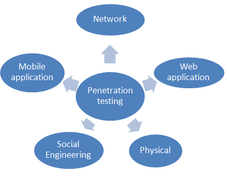IP CCTV Camera: Advantages and Disadvantages
Advertisement
CCTV systems are broadly classified into IP CCTV and Analog CCTV. An IP CCTV camera system, also known as an IP surveillance system, is a network-based video surveillance system that uses Internet Protocol (IP) technology to transmit and receive video and audio data over a computer network, such as the internet or a local area network (LAN). IP CCTV cameras are a modern alternative to traditional analog CCTV cameras, and they offer several advantages. Both systems allow us to view on smartphone, record on a digital hard drive and help us produce up to 4K 1080p HD images.
What is IP CCTV Camera?
In digital CCTV or IP CCTV systems, IP video cameras are connected with NVR (Network Video Recorder) through ethernet cables. In this system, IP cameras broadcast a digital video stream over an IP network. The digital form of videos are recorded on hard disk drives. Cameras are connected with the NVR through an ethernet switch. Latest NVRs are equipped with a built-in ethernet switch for interfacing cameras.

Figure-1 : IP CCTV system block diagram
The block diagram depicts connections of various modules used in the IP CCTV system. All the system modules shown are manufactured by Hikvision (Hangzhou Hikvision Digital Technology Co., Ltd.). HIKVISION is a Chinese state-owned manufacturer.
The major module is the Network Video Recorder (NVR) with which all the other modules of the system are interfaced. A hard disk such as Seagate is connected inside the NVR box as per requirements such as 1TB, 2TB etc. The complete system with all the components are easily available from reputed vendors across the world as per the required number of cameras.
As shown, a wifi router is interfaced on the ethernet port of the NVR. The router can provide connectivity with an ISP (Internet Service Provider), ethernet switch, desktop or laptop and NVR. All the wired or wireless devices can connect with the internet via the router.
Cameras provide connectivity with the NVR directly or through an ethernet switch/router based on the NVR models used. A monitor can be interfaced with VGA or HDMI port as per resolution requirements.

Figure-2 : NVR Back Panel
The following table mentions rear panel interfaces used on network video recorder DS7600 series.
| No. | Item | Description |
|---|---|---|
| 1 | Power Supply | 12V DC power supply |
| 2 | Audio IN | RCA connector for audio input |
| 3 | HDMI Interface | HDMI Video output connector |
| 4 | LAN | Network Interface 10/100/1000 Mbps self-adaptive ethernet interface |
| 5 | Audio Out | RCA connector for audio output |
| 6 | VGA Interface | DB9 connector for VGA output. Display local video output and menu. |
| 7 | USB interface | Used to connect USB devices such as a mouse and hard disk drive |
| 8 | GND | Ground |
| 9 | Power Switch | Used to switch ON/OFF the NVR. |
| 10 | Network interfaces | with built-in switch function. Built-in switch network interfaces for cameras. |
10 Advantages of CCTV
Following are the benefits or advantages of CCTV:
- It can use existing CAT5e wiring.
- It is a scalable system. Multiple cameras can be added to the NVR (Network Video Recorder).
- It is easy to integrate with other security and home automation systems. This enhances overall security and control.
- It supports smart features. IP cameras can be configured remotely. They support advanced features such as motion detection, video analytics etc.
- It is more flexible and upgradable due to the use of the IP feature.
- It uses PoE (Power over Ethernet) which eliminates the need for power cables.
- It supports much higher resolution and better picture quality than an analog CCTV system.
- Video data is stored digitally, making it easier to manage, search and archive footage efficiently.
- IP cameras often come with advanced features such as motion detection, facial recognition, analytics and more for enhanced security and functionality.
- Despite higher upfront costs, IP systems can be cost effective over time due to their flexibility, scalability and advanced features.
10 Disadvantages of CCTV IP Camera
Following are the drawbacks or disadvantages of IP Cameras:
- It requires considerable technical knowledge for installation compared to analog CCTV.
- Cameras require the IP network to be up and running for their operation. If the network goes down, so does the ability to view and record video, which can be a critical drawback in some scenarios.
- IP cameras are more expensive compared to normal cameras.
- IP cameras can consume significant bandwidth, especially when multiple cameras are in use, which may impact network performance.
- High-resolution IP cameras generate larger video files, leading to increased storage requirements, which can be expensive, especially for long-term retention.
- While PoE simplifies installation, it requires access to power sources or backup power solutions in case of power outages.
- Some older IP cameras may not be compatible with newer network standards and software, requiring periodic updates or replacements.
- Network latency or delays can affect real-time video streaming, which may be critical in certain applications like live monitoring.
- IP cameras may require more maintenance and software updates compared to analog cameras.
- IP cameras are vulnerable to network-based attacks if not properly secured, potentially compromising the security of the entire system.
Conclusion
In summary, an IP CCTV camera system offers advantages such as higher resolution, remote access, scalability, digital storage, and advanced features, but it comes with disadvantages like higher initial costs, network vulnerabilities, bandwidth usage, storage expenses, and dependence on network reliability. The choice to use IP CCTV should consider the specific needs, budget, and technical expertise required for installation and maintenance.
Advertisement
 RF
RF



